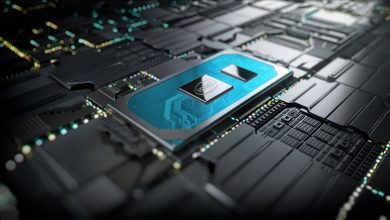
IP address is a numerical label assigned to each device connected to a computer network that uses Internet Protocol for communication. In layman terms, there are two versions of IP addresses i.e. IPv4 and IPv6. IP addresses are numerical values just like your cellphone numbers for example 192.168.0.1 in IPv4 and 2001:db8::8a2e:370:7334 in IPv6. These IPs can either be private or local and external or public in nature. Private or local IPs are for intranet and external or public IP are connected to Internet that help you reach other sites and vice-versa.

IPv4 address space has a size of 32 bits, which limits the total address space to 4294967296 addresses. Of this number, some addresses are reserved for special purposes. So, the total number of IPv4 addresses available for allocation to general public is much less than the above said figure. It is an alarming situation already.
In IPv6 networks, the address space size has been increased from 32 bits in IPv4 to 128 bits, thus providing up to 340,282,366,920,938,463,463,374,607,431,768,211,456 which is approximately 340 undecillion, or 340 billion billion billion billion, addresses. This kind of address space size bestows upon us the redundancy that isn’t feasible with IPv4 in coming century.
This tremendously bigger address space in version 6 of Internet protocol offers us real possibility to connect all the available peers or users in the world communicate with each other in a more direct manner with least friction from third parties. It is a beeline to decentralization of Internet service with free and open peer to peer technology readily available today. With IPv4 only networks, owing to obvious expensive IP lease cost, this dream would be difficult if not impossible to realize.
All the modern day operating systems on general purpose devices like desktop, laptop, mobile and not forgetting tablet or other smart devices not only have robust support for IPv6 but prioritize or prefer it over IPv4. It is nothing but good news and is generally in favour of greater good or general public owing to rather tiny address space for IPv4 in comparison with IPv6.
IPv4 address exhaustion is the depletion of the pool of unallocated IPv4 addresses. Because there are fewer than 4.3 billion addresses available, depletion has been anticipated since the late 1980s, when the Internet started to experience dramatic growth. This depletion is one of the reasons for the development and deployment of its successor protocol, IPv6. Currently IPv4 and IPv6 coexist in the Internet. Obviously, more addresses are needed for a modern Internet as the number of devices increase. The other problem with IPv4 is network address translation (NAT). Overloaded NAT — one IP with multiple private IPs behind it — breaks quite a few applications and provides no additional security against Internet threats. This results in a cost increase with no counter-benefit. APNIC was the first regional Internet Registry to run out of freely allocated IPv4 addresses, on 15 April 2011. This date marked the point where not everyone who needed an IPv4 address could be allocated one. As a consequence of this exhaustion, end-to-end connectivity as required by specific applications will not be universally available on the Internet until IPv6 is fully implemented. It is estimated that unallocated IPv4 addresses will completely run out by next decade.
There is undisputed significance of IPv6 space in today’s world. It is the magical key to realize end to end communication which is a must to up the level of security and privacy of both public and private networks and bring about decentralization of resources over Internet. We see nothing but perks of IPv6 over IPv4 with a very few or limited caveats. When you consider the fact that you can still reach IPv4 with IPv6 using available technology until a universal transition, we say, you must out-rightly switch to IPv6. Do not take IPv6 as a futuristic technology, most part of the globe is late in acknowledging the drastic situation of IPv4 address space that has prevailed since half a decade now. You should be adopting IPv6 immediately, better late than never.
How does adoption of IPv6 benefit an IT startup?
With a startup, there is a vibrant idea and then is a cool application that you see on your mobile devices with powerful embedded CPUs as a finished product. A new idea that solves a problem and some how fits in empty space of plethora of applications in global market today.
Technical aspect of an IT startup includes an idea, code, coders, remote teams, resource sharing and secure access to it. Security of resource sharing or access, privacy of data including code, correspondence has to be paramount in world with general public’s activism in the realm of data protection and privacy laws around the globe. All of these situations can largely benefit from redundant IPv6 address space which facilitates peer-to-peer communication, the very marrow of end-to-end encrypted interactions designed in amalgamation with algorithms using properly implemented mathematics approved by respective authorities and numerous open researchers world-wide.
It isn’t that easy to follow without going through the individual elements of whole process of software development. It may vary from team to team but majority of the teams around the globe accept the following as steps or elements of a successful software development project:
-
Studying the requirement
-
Design and its implementation
-
Development and testing
-
Deployment and distribution
-
Maintenance and support
Let us take a quick dive into Development and testing out of the list owing to the subject matter of the article.
Development and testing is hardcore part of software development. Meet the coders, software developers, who would crank up the mechanical keyboards and music at times, to write the professional code for your software in the swift manner. This is a dedicated development team that works closely to meet the desired goal in time. Their work ranges from writing from scratch to optimizing existing code as per the formal plan’s design guidelines. The whole software development project is divided into various components which is assigned to different software developers or coders or a dedicated team if that specific component requires exponential proficiency. So, various developers work on small components of software on different platforms. Once the software is developed, it is tested among team members in unstable and alpha stages. Here the software produces a lot of bugs or critical issues, mostly fatal in nature. Once these critical bugs are fixed and resolved, a beta product is shared with users identical to the final end users of the product or at times with real users to get valuable direct feedback. This process of development and testing is a must to produce a stable release. This process of testing takes a lot of years in case of software for masses and its significance can only be known by the classic case of powerful webmail software called Gmail. It has undergone years of beta testing before finally enter a stable release. Once the software has been developed and tested for the end user’s rock solid experience, it is time to deliver it.
With use of robust and secure virtual access technologies, you can allow access to particular array of your code for remote teams with expertise on the specific field. Some of the software development companies exists that function under this remote model allowing and entertaining talent from world-wide expunging the dated, stale traditional model of on-site development. It just makes no sense in 21st century or in the new world of startups and freelancing to hire people and in a way force them to do the work your way and monitor their other activities than the software or code that they deploy of the component that they are working on. It is too much for too many. It increases overall administration cost and hence is slowly being moved to the newer remote model of development. Remote teams have always been popular in the last link of the process of software development i.e. maintenance and support. End user support has always been outsourced to a dedicated remote team who specializes in this realm.
One should not treat remote teams as second class developers. It sounds like a wonderful idea, but do they get the kudos they deserve? Not always, mostly owing to the extra burden of access and data integrity related issues in exchanges over nonuniform platforms between on-site and remote team. By now, I am sure you understand the prerogative of being part of IPv6 address space in your firm or company. With delegation of duties as per the formal plan by a chef technical officer and secure allocation of resources that is precise access to specific project data or code to work with using robust open source virtual network technologies like Wireguard, a well hired remote team could function on par with on-site employees. IPv6 helps in unique identification of a remote peer to properly authenticate one to grant access to a specific resource over secure channel. When a developer from Philippines working for a Nordic data storage company remotely connects using a unique IPv6 address using secure channel, it expedites code development in a live environment while upholding the privacy of exchanges and integrity of the code.
Remote teams are nifty and viable options to solve a problem with code and hence is to be hired with same level of importance as on-site team. After all we aim to eradicate the differences that physical man-made boundaries have drawn and connect hearts with IP technology and professional software development in an IT startup.
As read above, we see nothing but numerous intra and inter network exchanges of code and correspondence and then there is a crystal clear space for remote access and resource sharing. With IPv6 in public networks for IT startup for all of the core and remote team-mates, there is tremendous possibility to deploy it in true peer-to-peer encrypted scheme instead of risking insecure exchanges and involving multiple third parties who we have to trust every now and then. A provider like ipv6onlyhosting.com helps you reduce cost by expunging those multiple 3rd parties services required with IPv4 with a bigger IPv6 available at your disposal. It being a Switzerland based provider with one of the most open Internet and strongest internet privacy and data protection laws addresses a lot of issues and immediately fixes numerous issues with IPv6 network with local cost storage options available and what not. Get IPv6 to communicate openly with public and private IPv6 networks without bearing the unnecessary expense of IPv4 lease any more and rather invest in what matters for your startup.






